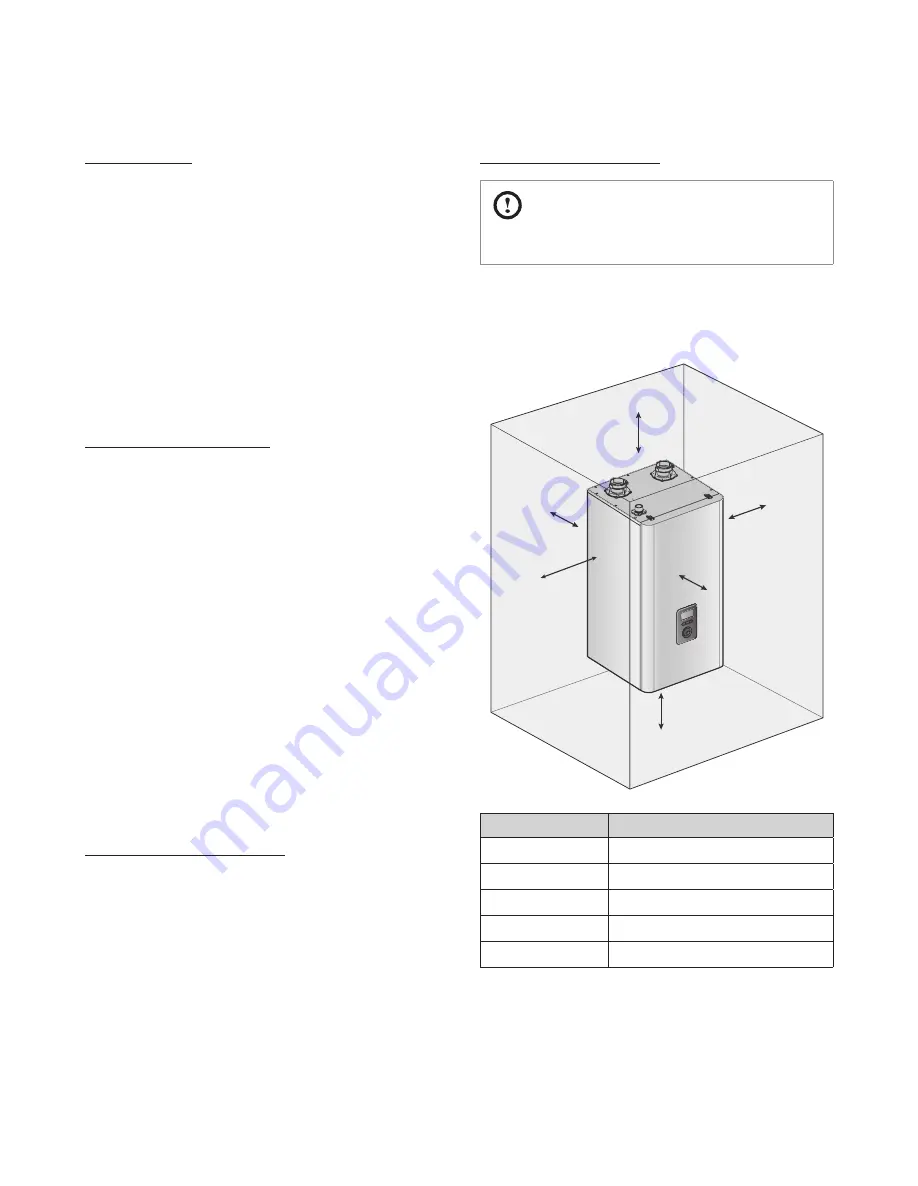
17
Installing the Boiler
Adequate Drainage
The boiler produces a significant amount of condensate during
operation. The boiler should be located near a suitable drain and
where damage from a possible leak will be minimal. Installing
the boiler in a location without a drain will void the warranty and
Navien will not be responsible for water damages that occur as a
result. For more information about condensate drainage, refer to
“3.3 Connecting the Condensate Drain” on page 25.
The boiler must be located in an area where leakage of the unit or
connections will not result in damage to the area adjacent to the
appliance or to lower floors of the structure. When such locations
cannot be found, installation of an adequately drained drain pan
under the boiler is highly recommended. When installing the drain
pan, ensure that the installation does not restrict combustion air
flow.
Adequate Venting and Ventilation
Select a location that requires minimal venting. Consider venting
restrictions caused by windows, doors, air intakes, gas meters,
foliage, and other buildings. For more information about venting,
refer to “5. Venting the Boiler” on page 52.
To ensure adequate venting and ventilation, follow these
guidelines:
●
Maintain proper clearances from any openings in the building.
●
Ensure that the vent termination is at least 12 in (305 mm) above
ground, 12 in (305 mm) above the highest anticipated snow
level, or as required by local codes, whichever is greater.
●
Maintain a minimum clearance of 4 ft (1.2 m) from heating and
cooling vents.
●
Do not enclose the vent termination.
●
Install the exhaust vent in an area that is free from any
obstructions, where the exhaust will not accumulate.
●
Do not install the boiler where moisture from the exhaust may
discolor or damage walls.
●
Do not install the boiler in bathrooms, bedrooms, or any other
occupied rooms that are normally kept closed or not adequately
ventilated.
Proximity to Fixtures and Appliances
Install the boiler near fixtures that deliver or use hot water, such
as bathroom, kitchen, and laundry room faucets. Select a location
that minimizes the water piping required between major fixtures.
If the distances are long or if the user requires “instant“ hot water,
installation of a recirculation line which circulates domestic hot
water back to the boiler from the furthest fixture is recommended.
Insulate as much of the hot water supply and recirculation lines as
possible. For more information about the water supply, refer to “3.2
Installing a Domestic Hot Water (DHW) System” on page 23.
Adequate Installation Clearances
CAUTION
Do not install the boiler on carpeting.
Install the boiler in an area that allows for service and maintenance
access to utility connections, piping, filters, and traps. Based on
the installation location, ensure that the following clearances are
maintained:
Top
Back
Side
Bottom
Front
Side
Clearance from:
Indoor Installation
Top
9 in (229 mm) minimum
Back
0.5 in (13 mm) minimum
Front
4 in (100 mm) minimum
Sides
3 in (76 mm) minimum
Bottom
12 in (300 mm) minimum
Summary of Contents for NFC-175
Page 122: ...Memo...
Page 123: ...Memo...
















































